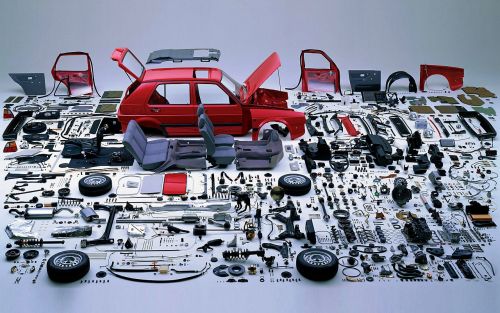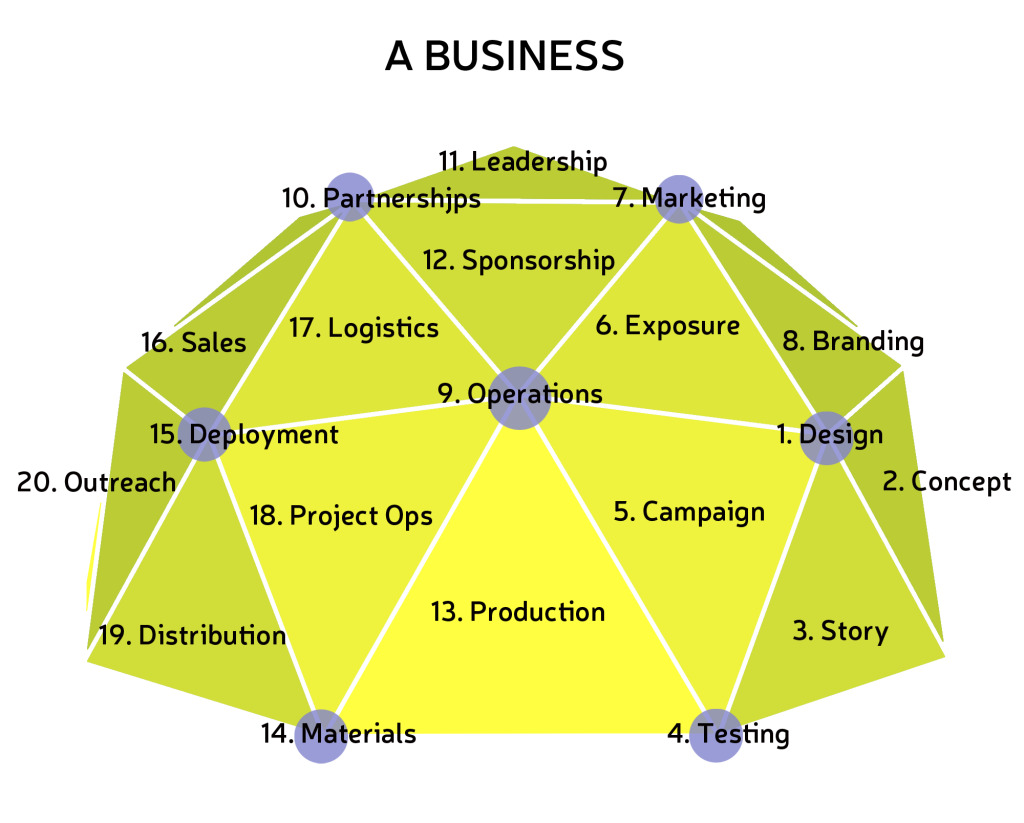MAKING SENSE OF BUSINESS
On the surface, business seems pretty simple: You do something or build something, and sell it for a profit. But when you consider all of the factors—tasks, jobs, processes, people— that comprise this doing, building, and selling…well, things begin to look vastly more complicated.
Consider a car. The concept is simple: a self-propelled box on wheels that gets you from one place to the other. But open the hood; examine the undercarriage; unpack its insides and you’ll discover all manner of nuts and bolts and wires and tubes and wheels and axles and pulleys and gears. Hundreds of pieces—thousands, even—each with its own purpose or task which, when put together in a certain way, allow a car to function. In fact, a car is a complex machine made up of a number of simple machines. A business is like that, too.

Try taking apart your business. Get a pen and paper and start writing down all the elements that go into making your business run. Now list all the factors associated with each item on your list. You’ll probably notice that there’s overlap between your primary and secondary lists and that each item is a function of others. In other words, each item is related to or dependent on other items. Try drawing lines to show these interconnections and dependencies.
Here’s what happened when I did this:
I ended up with a big jumbled mess. My guess is, so did you.
So how do we start to make sense of all these interdependent factors and functions within a business? Since, as we know, I’m compelled to think in visual terms, I started by drawing a picture.
 In my visual, each primary function of the business is marked by a point. When connected, these points form the vertices of triangles. Within each triangle is a sub-function. The numbers indicate the order in which functions and sub-functions should be conceived. So, for instance, according to the model, your plan for Marketing the product (#7) needs to be plotted out prior to your plan for Branding it (#8). I should point out that this order is not set in stone. In fact, you may find some variation that works best for your particular business. But I find this model makes the most sense and, in my experience, works the best.
In my visual, each primary function of the business is marked by a point. When connected, these points form the vertices of triangles. Within each triangle is a sub-function. The numbers indicate the order in which functions and sub-functions should be conceived. So, for instance, according to the model, your plan for Marketing the product (#7) needs to be plotted out prior to your plan for Branding it (#8). I should point out that this order is not set in stone. In fact, you may find some variation that works best for your particular business. But I find this model makes the most sense and, in my experience, works the best.
When expressed in this graphic depiction, the triangles allow us to see at a glance how all of the functions relate to one another and to the overall business. For example, if you look at the Marketing function and go around it, you will see that you:
- Market the Branding
- Market the Exposure (PR)
- Market the Sponsorships
- Market the Leadership
Two of the sub-functions of Marketing—Branding and Exposure—are also shared by Design. Go around the Design function and you will see that you not only need to Design the Branding and Design the Exposure, but you also need to Design the Concept, the Story, and the Campaign. Keep going and you’ll see that Concept and Story are shared by the Testing function, which shares Production with Operations and Materials functions, and so on.
Here are some other ways to look at it:
- When you do Outreach (to other people who might be interested), you are reaching out with the Concept.
- When you do Sales (to people who want to buy), you are selling the Brand.
- When you are Distributing a product or service, you are distributing the Story with each transaction.
Everything is connected to everything else. By illustrating these connections clearly and cogently, the model allows me to build out tasks, job responsibilities, and business processes in more meaningful and efficient ways.
Pretty cool, right?
But there were still a few critical factors missing from the picture.
- Businesses are complicated.
- In a business, everything is connected to everything else.
- There are ways to visualize the connections in a business.
In the next section you will learn why a static image isn’t sufficient for understanding what’s happening with your business.